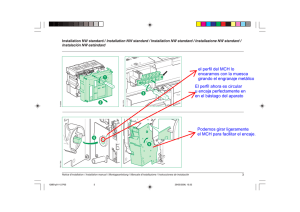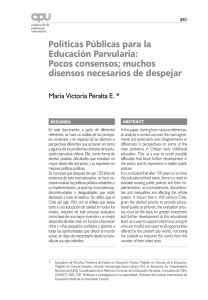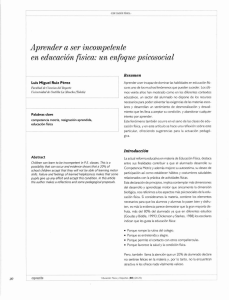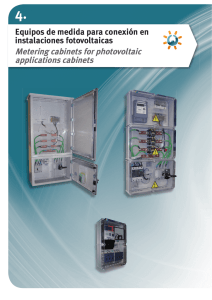resumen del pr
Anuncio
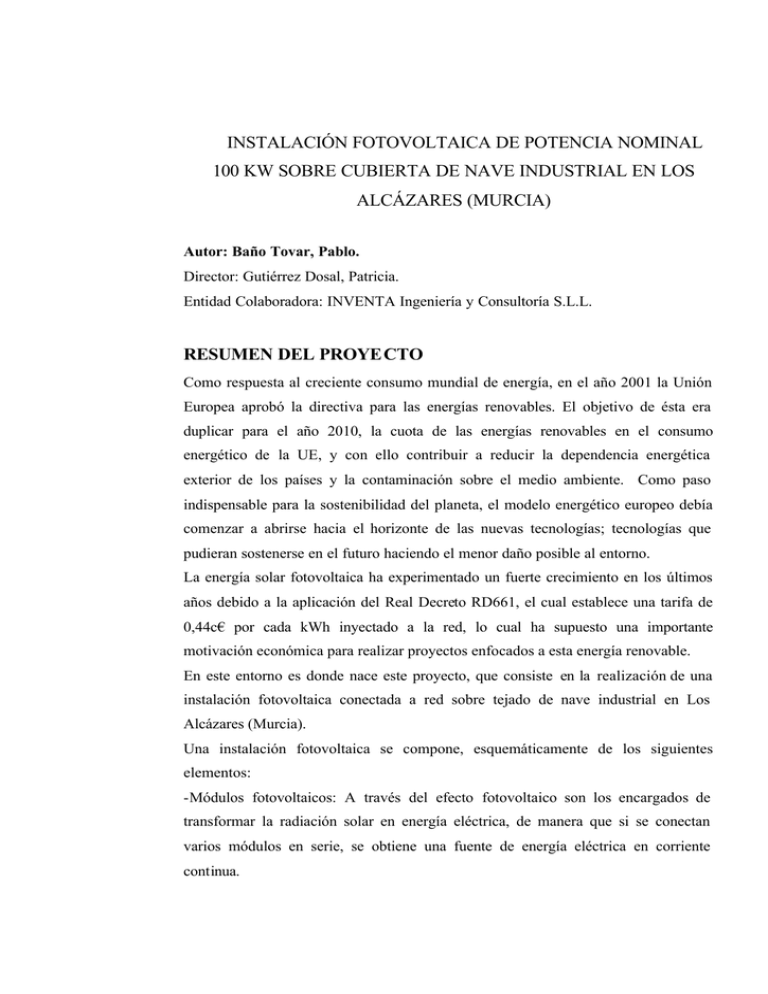
INSTALACIÓN FOTOVOLTAICA DE POTENCIA NOMINAL 100 KW SOBRE CUBIERTA DE NAVE INDUSTRIAL EN LOS ALCÁZARES (MURCIA) Autor: Baño Tovar, Pablo. Director: Gutiérrez Dosal, Patricia. Entidad Colaboradora: INVENTA Ingeniería y Consultoría S.L.L. RESUMEN DEL PROYECTO Como respuesta al creciente consumo mundial de energía, en el año 2001 la Unión Europea aprobó la directiva para las energías renovables. El objetivo de ésta era duplicar para el año 2010, la cuota de las energías renovables en el consumo energético de la UE, y con ello contribuir a reducir la dependencia energética exterior de los países y la contaminación sobre el medio ambiente. Como paso indispensable para la sostenibilidad del planeta, el modelo energético europeo debía comenzar a abrirse hacia el horizonte de las nuevas tecnologías; tecnologías que pudieran sostenerse en el futuro haciendo el menor daño posible al entorno. La energía solar fotovoltaica ha experimentado un fuerte crecimiento en los últimos años debido a la aplicación del Real Decreto RD661, el cual establece una tarifa de 0,44c€ por cada kWh inyectado a la red, lo cual ha supuesto una importante motivación económica para realizar proyectos enfocados a esta energía renovable. En este entorno es donde nace este proyecto, que consiste en la realización de una instalación fotovoltaica conectada a red sobre tejado de nave industrial en Los Alcázares (Murcia). Una instalación fotovoltaica se compone, esquemáticamente de los siguientes elementos: -Módulos fotovoltaicos: A través del efecto fotovoltaico son los encargados de transformar la radiación solar en energía eléctrica, de manera que si se conectan varios módulos en serie, se obtiene una fuente de energía eléctrica en corriente continua. -Inversor fotovoltaico. A través de la electrónica de potencia, los inversores fotovoltaicos se encargan de transformar la corriente continua procedente de los módulos fotovoltaicos en corriente alterna a la misma tensión y frecuencia que la red a la que se va a inyectar la electricidad. Para la realización de la instalación el primer cálculo a realizar es el dimensionamiento de la instalación, en función de las características de los equipos. A través de este estudio se conocerá el número de equipos necesarios y su distribución. A continuación, una vez conocidos el número de módulos y de ramas en serie de que consta la instalación, se debe proceder a realizar cálculos de cableado y protecciones eléctricas, tanto para la parte de corriente continua como para la parte de corriente alterna de la instalación. El siguiente paso consistiría en realizar la sujeción de los módulos a la nave y comprobar si la estructura soporta el peso de los paneles, así como de todos los elementos situados sobre tejado que se hayan implantado. Como último paso se realiza un estudio de la energía generada por la instalación al año. Este punto es fundamental para poder conocer los kW/h generados y poder estimar los ingresos que obtendrá la instalación. El análisis económico de la inversión a realizar es uno de los puntos clave del presente proyecto, ya que la finalidad última del mismo es ser rentable. En éste análisis se han tomado hipótesis siempre desfavorables, es decir, se ha realizado un estudio conservador. Se considera una vida útil de la instalación de veinticinco años. A la vista de los resultados, cabe destacar tres aspectos fundamentales, que hacen atractiva la inversión: 1. El valor del VAN es de 885.569,29 €. 2. El mantenimiento que hay que realizar de la instalación es mínimo. 3. El pago de la energía generada está asegurado por decreto, con lo cual es una inversión prácticamente de cero riesgo. Este proyecto nace como fruto del compromiso medioambiental, favorecido por el entorno legal español actual y la situación geográfica de España, pretendiendo un beneficio económico de una forma sostenible. PHOTOVOLTAIC INSTALLATION OF 100 KW NOMINAL POWER ON THE ROOF OF AN INDUSTRIAL PLANT IN LOS ALCÁZARES (MURCIA) In response to the world´s growing energy consumption, in 2001 the European Union approved the Renewable Energies Directive. The aim of was to double by 2010 the quota of renewable energies in the EU´s energy consumption, and therefore contribute to a reduction in the energy dependence on foreign sources and environmental pollution. As an essential step for the earth´s sustainability, the European energy model should start focusing on new technologies; technologies that could be sustainable in the future whilst causing the minimum damage to the environment. In recent years, photovoltaic solar energy has experienced strong growth due to the application of Royal Decree RD661, which establishes a tariff of 0,44€ per kWh fed into the electricity grid. This has provided important economic motivation to carry out projects focused on this type of renewable energy. It is this environment which has given rise to this project, which consists in the construction of a photovoltaic installation on the roof of an industrial plant in Los Alcázares (Murcia), connected to the grid. A photovoltaic installation is composed of the following elements: -Photovoltaic modules: Through photovoltaic effect, these modules transform solar radiation into electricity, in such a way, that if several modules are connected in series, a continuous current of electricity is obtained. -Photovoltaic inverter. Through electronic power, the photovoltaic inverters transform the continuous current originating from the photovoltaic modules into alternating current at the same frequency and tension as the grid into which the electricity is going to be fed into. To carry out the installation the first calculation that has to be done is that of the dimensions of the installation, based on the characteristics of the equipment. By means of this study we can calculate the necessary equipment and its distribution. Once the number of modules and the strings in series that make up the installation is known, the required amount of cable and electrical protectors must be calculated, for both the continuous current and the alternating current of the installation. The next step consists in carrying out the attachment of the modules to the roof of the industrial plant and verify that the structure supports the weight of the panels as well as all the installed elements situated on the roof. As a last step s study of the energy generated p.a. of the installation is carried out. This is fundamental in order to know the kW/h generated and estimate the income obtained from the installation. The economic analysis of the investment required is one of the key points of this project, given that the ultimate aim of the latter is that it should be profitable. In this analysis the most unfavourable hypotheses have been considered, this is to say, a conservative study has been carried out. The useful lifespan of the installation is considered to be 25 years. Considering the results, three fundamental aspects should be highlighted that make this an attractive investment: 1. Net Present Value is 885.569,29 €. 2. Maintenance required on the installation is minimum. 3. As payment of the energy generated is guaranteed by decree, this is practically a zero risk investment. This Project has emerged as a result of an environmental commitment, favoured by the present Spanish legal environment and Spain’s geographical situation, with the aim of achieving economic benefits in a sustainable way.
